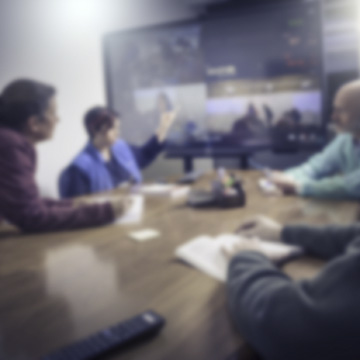Debriefing technique to promote change in the attitudes and behavior of the participants
In strategic debriefing, the questions, instead of only guiding the debriefer and the student to understand the problem to be solved or the mistake made, become the vehicle to induce students to feel things differently and therefore to change their reactions, helping them to discover their own resources that were blocked by previous perceptions, sometimes rigid and pathogenic.1.

As in traditional debriefing, the questions are initially open, more general and broad, and then go through a spiral process that narrows according to the student’s answers, structuring around the particular characteristics of the situation and highlighting the critical points.
With traditional debriefing methods, whether you use only open-ended questions or the pulse/delta method or the inquiry-statement method, you run the risk of not permanently changing the attitudes of the participants but only of proposing reflections, sometimes superficial, related to that scenario. Traditional methods can certainly be used and considered a preliminary and complementary bridge to the strategic dialogue, which not only deepens the causes of the results observed but also promotes a change in the attitude of the participants.
The structure of the strategic dialogue makes use of questions with the illusion of alternatives, restructuring paraphrases, the evocation of sensations and the technique of summarizing to redefine. Take paraphrasing for example. It is a dialectical technique that confirms that the reflection is going in the right direction and that allows the students’ perception to be anchored to the new perspective regarding the experience of the scenario. 2 In practice, the debriefer does not propose any evaluation or interpretation, but modestly asks for a verification of his own comprehension process (“correct me if I’m wrong…”, “if I understand correctly…”). “The same words in different sequences produce different results.” This statement by Pascal fits well with the methodology of the restructuring paraphrase. Paraphrasing creates a climate of collaborative relationship and, therefore, without prejudice, between the debriefer and the student, and avoids any misunderstanding and resistance. The student feels accepted and situated in the first person, the architect of the discovery made about the problem posed and its resolution. In addition, it helps to consolidate in the student the conviction that even if mistakes have been made, the most important thing is what we do with those mistakes because, as Huxley says, “reality is not what happens to us, but what we do with what happens to us”.
Again, in strategic debriefing, evocative language is widely used, that is, all rhetorical figures and poetic forms: aphorisms, metaphors, anecdotes, specific examples, narratives or contradictions. This technique is used to create aversion towards attitudes or behaviors that should be interrupted or changed and enthusiasm towards those reactions that should be encouraged or increased.
Another key element of the strategic debriefing taken from the strategic resolution of problems, from the definition of objectives.3 In the final phase of the debriefing, that is, when the debriefer is aware that each of his students has learned something from the scenario, the student is asked not only to share what he has learned, but is led to reflect on what he has learned, how the debriefing experience can represent the first step towards a personal change which in turn can lead to a positive change in his clinical activity. For this, the definition of the SMART objective is introduced: Specific, that is, concrete and clear, Measurable, that is, defined in terms of observable results, Assignable, that is, really feasible for someone, Realistic, based on limitations and resources and Time-related, that is, achievable in a certain period of time. Therefore, the debriefer will have to formulate the question in such a way that it responds to the achievement of an objective that is SMART, that is, the smallest feasible step of concrete change and that depends solely on the student.4
At this point, the example that can help you understand this new form of debriefing is missing. However, I will leave you pending until the next article in which a specific example of strategic debriefing will be described. For the curious and the most impatient, I refer you to our book The Debriefing after the Simulation Scenario, which already offers a good introduction to the subject, or I invite you to participate in our Advanced Strategic Training courses.
Until the next article!
1 Capogna G et al. The strategic debriefing. Incorporating strategic dialogue in the standard debriefing after the scenario. Med Ed Publ Publish 9 (1) 2020
2 Nardone G, Salvini A. Il dialogo strategico. Ponte alle Grazie, 2004
3 Nardone G, Mariotti R, Milanese R, Fiorenza A. La terapia dell’azienda malata. Ponte alle Grazie, 2004
4 Doran GT. There’s a S.M.A.R.T. way to write management’s goals and objectives. Management Review. 70 (11): 35–36, 1981
READ ALSO












































